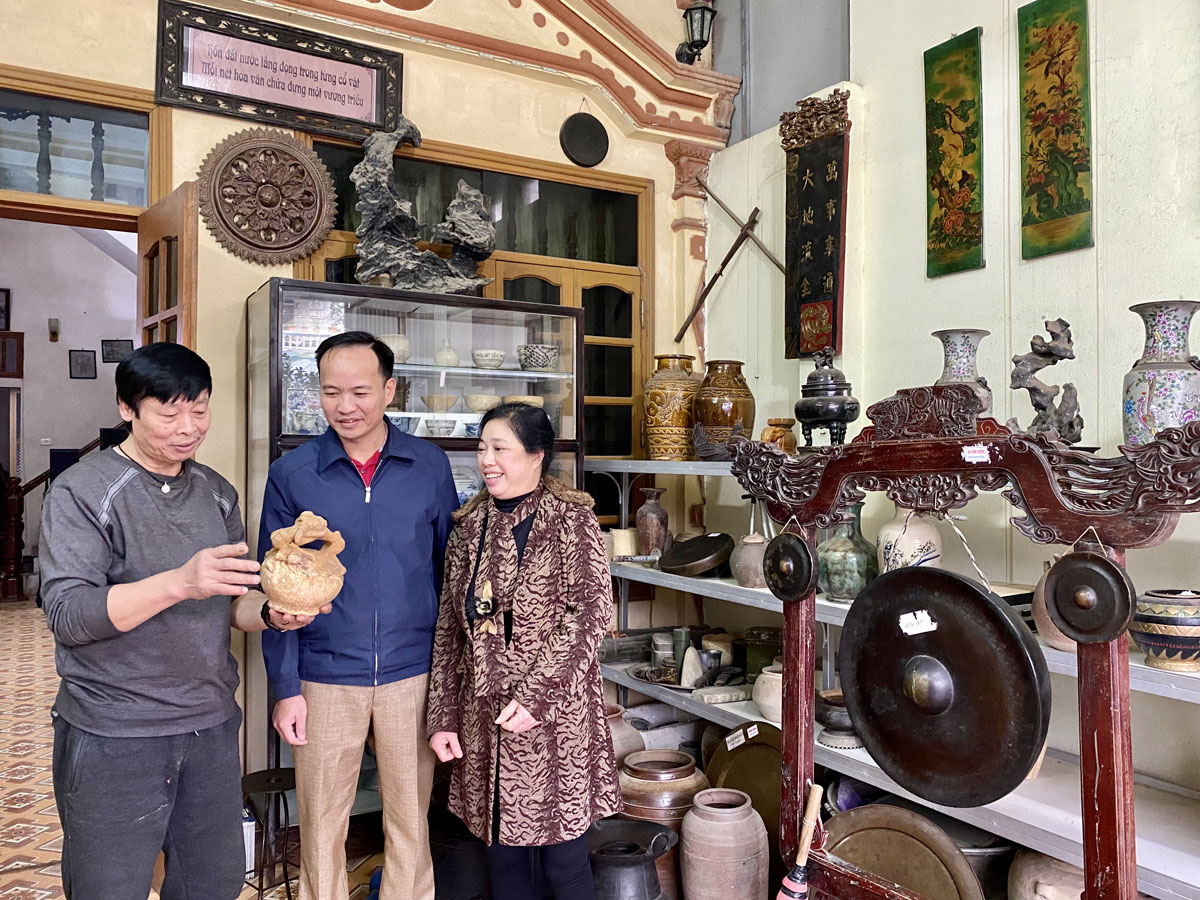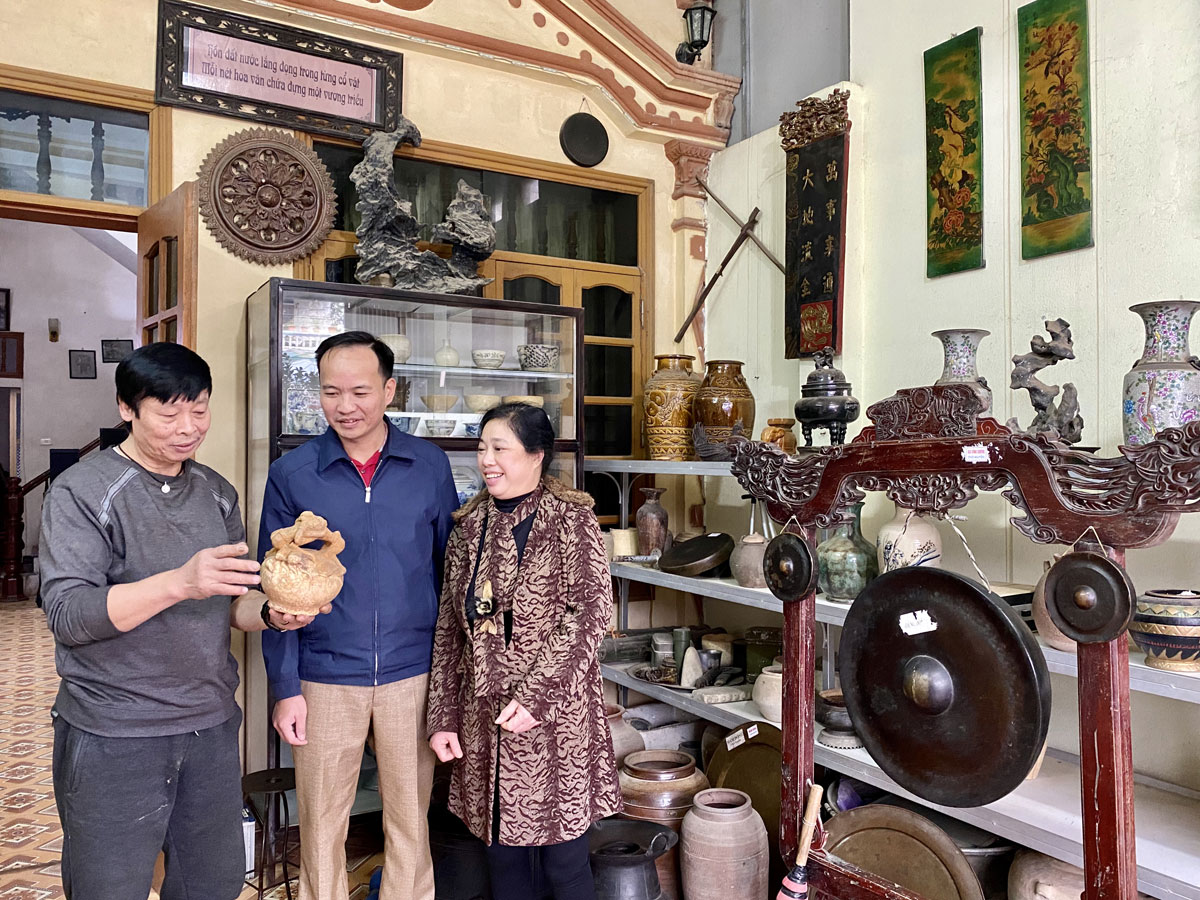


 The collector, Mr Vu
Tat Chien from Hang Tram town (Yen Thuy) is introducing an ancient lime vase
that is 700 years old.
The collector, Mr Vu
Tat Chien from Hang Tram town (Yen Thuy) is introducing an ancient lime vase
that is 700 years old.
Being lost in "the treasure” of antiques
Mr. Chien says that he has been interested in collecting antiques since he was young. Later, when he got married, he and his wife have been to a number of places inside and outside the province to buy scrap materials and then they got acquainted with this and other place. Thanks to the fate, he has collected objects of great historical and cultural value. For many antique enthusiasts, the items he owns are the ones that cannot be bought with a lot of money.
"The treasure” of his antiques is extremely rich and respectable, which are mostly 400 years ago. There are antiques from thousands of years ago, such as the stone ax, the lama stone (also called sacred stone), the ancient coins, the ancient jars ... Some artifacts are from 500-700 years ago, such as Chu Dau plate, a pair of Van Ninh bottles. Under Le and Nguyen dynasties from 300 – 400 years ago, there is aset of 4 jars, pairs of wood panels and gongs, some items in daily activities of the ancient Muong people such as Pieng, jars, lime pots, hunting tools (crossbow, musket) ... These treasures are all cherished and well preserved by Mr. Chien. In addition, he set up a separate corner to display objects in the subsidized period such as televisions, radios, lamps, bicycles ...
According to him, playing antiques must be knowledgeable in history, and it is necessary to have knowledgeable in order to distinguish the antiques from imitation products. In order to assess what is real and what is fake, it is necessary to carefully consider the enamel, essence, motif ... In the eyes of antique players, these are also the factors that make the antiques become soulful.
Handing down the history of Muong land and culture
Being a Kinh person, however he is passionate about Muong culture and history, Mr. Chien has been diligently collecting and preserving values. According to his him, in the years of 89 and 90 of the last century, a lot of the antiquities of Muong in Hoa Binh land were lost by trading to other provinces or to China. Having put a lot of effort and regardless of the money, Mr. Chien persisted in fulfilling his desire to retain a part of that cultural and historical value.
Minh Mạng với chất liệu đồng Đông Sơn được treo ở vị trí trang trọng nhất.
For decades, Mr. Chien has been to all the Muong areas in the province, especially in Lac Son and Yen Thuy to collect treasures. In his fortune, there are many items he found in the former villages of spirituality such as Chieng hamlet in Vu Ban town (Lac Son), Chieng hamlet in Bao Hieu commune; Nau and Thay hamlets in Lac Luong commune (Yen Thuy) ... In particular, he has a collection of ancient gongs including 12 from the Nguyen dynasty, of which the gong dividing the crown in Minh Mang King is considered as a treasure. It is made of Dong Son copper and is hung in the most solemn position.
Since 2013, at a number of events, especially the activities related to the promotion of the cultural and tourism identity of Yen Thuy district, he has often been invited to exhibit, introduce and share the cultural knowledge and history through the artifacts he kept. This provokes the pride and encourages the individuals like him to continue preserving and protecting artifacts with cultural and historical values of Muong land.